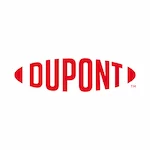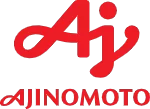
- Published 2024
- No of Pages: 200
- 20% Customization available
Global Silicone Military Patches Market Size, Production, Sales, Average Product Price, Market Share, Import vs Export – United States, Europe, APAC, Latin America, Middle East & Africa
Global Silicone Military Patches Market Revenue Size and Production Analysis, till 2032
Global Silicone Military Patches Market Size is expected to grow at an impressive rate during the timeframe (2024-2032). Silicone Military Patches demand is growing due to
1 Durability and Longevity: Silicone patches are more durable than traditional fabric patches, offering resistance to fading, cracking, and wear. They can withstand harsh weather conditions, extreme temperatures, and physical stress, making them ideal for military use where longevity and reliability are crucial.
2 Customization and Flexibility: Silicone patches can be easily molded into various shapes and designs, offering a high degree of customization. This flexibility allows military units to create unique patches with intricate details, logos, and insignias, meeting the specific needs of various military branches or missions.
3 Comfort and Wearability: Silicone patches are lightweight and can be more comfortable to wear compared to traditional embroidered patches. Their soft texture also helps reduce irritation or discomfort when worn on uniforms for extended periods.
4 Water Resistance: Silicone is inherently waterproof and resistant to moisture, making these patches ideal for use in wet or high-humidity environments where fabric patches might degrade or lose their appearance.
5 Aesthetic Appeal: Silicone patches have a modern, sleek look and can be made in various vibrant colors that do not fade easily. This aesthetic appeal is often preferred by military personnel for personalizing uniforms or gear.
6 Cost-Effectiveness: Although silicone patches may be more expensive initially, their durability and longer lifespan make them more cost-effective over time, reducing the need for replacements.
7 Increased Use in Tactical Gear: As tactical gear, bags, and other military equipment become more specialized, the need for durable, customizable, and high-performance patches has grown, contributing to the rising demand for silicone patches.
8 Popularity in Military Souvenirs and Collectibles: Silicone military patches are increasingly popular in the souvenir market, where collectors appreciate their durability and uniqueness. This has expanded their use beyond just active-duty personnel to veterans and enthusiasts as well.
United States Silicone Military Patches Market Recent Developments and Business Opportunities
The demand for silicone military patches in the United States is growing due to several key factors. One significant driver is the increasing demand for durable, weather-resistant materials in military applications, where silicone’s properties—such as water resistance, flexibility, and longevity—make it an ideal choice. The shift towards more sustainable and eco-friendly materials is also contributing to the rise in silicone-based products, as manufacturers are exploring ways to make these patches using recyclable or renewable silicone formulations. Furthermore, the increasing focus on high-performance materials in both defense and fashion, where military patches often serve both functional and aesthetic purposes, is boosting demand.
In terms of business opportunities, manufacturers can capitalize on the growing trend of using advanced production techniques, such as 3D printing and automation, which enhance efficiency and customization in creating silicone patches. Additionally, the expansion of military contracts and the increasing adoption of high-quality, durable gear provide promising prospects for silicone military patch producers, particularly those who can innovate in design and functionality.
To leverage these opportunities, companies may also explore collaborations with other industries like fashion or corporate branding, where silicone patches are being adopted for a wider range of uses.
Europe Silicone Military Patches Market Recent Developments and Business Opportunities by Country
Recent Developments:
- Technological Advancements: Innovations in silicone manufacturing have enhanced the durability, flexibility, and customization of military patches. These advancements are leading to high-quality patches that meet the specific requirements of the military sector, such as resistance to extreme weather and environmental conditions.
- Sustainability: As sustainability becomes a global focus, silicone manufacturers in Europe are increasingly emphasizing eco-friendly materials and production methods for patches. This shift aligns with the broader environmental trends in the defense and military sectors.
- Regional Growth: Countries like the UK, Germany, and France are key players in the European silicone market, benefiting from strong defense spending and military modernization initiatives. These regions are witnessing a rise in demand for advanced military accessories, including silicone patches, as part of their broader defense efforts.
Business Opportunities:
- Customization and Personalization: The ability to create highly customized silicone military patches offers a significant business opportunity. With advancements in digital printing and 3D technologies, companies can offer detailed, personalized designs to military clients.
- Regional Expansion: Manufacturers that are already well-established in one European country can explore expanding into emerging markets within the EU, where defense budgets are increasing and there is a growing need for military insignia and patches.
- Collaborations and Partnerships: Collaborating with military manufacturers, government agencies, and defense contractors is a promising strategy for growth in this niche market. Partnerships can help companies secure long-term contracts and expand their presence in the defense sector.
The European silicone military patches market is expected to grow as demand for durable, customizable patches rises, particularly as European nations focus on improving their military capabilities. For a more detailed market analysis and future trends, industry reports like those from Precision Business Insights and others can offer in-depth insights into the forecast for 2024 and beyond
Middle East Silicone Military Patches Market Recent Developments and Business Opportunities by Country
1 Increased Military Modernization: Countries such as the UAE and Saudi Arabia are heavily investing in modernizing their armed forces and localizing defense industries. This includes producing military goods such as uniforms and patches domestically, which fuels demand for silicone-based solutions. This shift towards self-reliance also opens opportunities for local manufacturers and innovation in military apparel.
2 Growth in Defense Manufacturing: The defense sector in the region is witnessing rapid development, with companies like EDGE in the UAE investing in both local and international markets. EDGE, for instance, focuses on creating advanced technology synergies and is expanding its footprint in defense markets across the Middle East, North Africa, and Asia.
3 Military Export Opportunities: Middle Eastern countries are seeking to not only become self-sufficient in their defense production but also to export high-quality military equipment, including uniforms and patches, to other regions. This enhances the demand for durable, high-performance materials like silicone.
4 Rising Focus on Sustainability and Durability: Silicone patches are gaining popularity due to their durability and ability to withstand extreme environmental conditions, which is essential for military use in the harsh climates typical of the Middle East.
Asia Pacific Silicone Military Patches Market Recent Developments and Business Opportunities by Country
The Asia Pacific market for silicone military patches has seen significant growth due to multiple factors, including increasing defense budgets in countries like China, India, and South Korea. The region’s demand for specialized military accessories, including patches, has grown with the modernization of defense forces, the expansion of tactical units, and the emphasis on uniforms for enhanced operational effectiveness. This trend is especially pronounced in countries that are heavily investing in military and defense technologies.
Recent developments in the region indicate a rising demand for high-quality, durable materials like silicone, which offer benefits such as flexibility, water resistance, and longevity. Additionally, the integration of advanced printing technologies has allowed for more detailed and customized designs on these patches, further boosting their popularity. These factors combined with the regional focus on modernizing military equipment have created ample business opportunities in the market.
Countries like Japan, South Korea, and India have seen steady growth in the defense sector, which in turn drives demand for personalized and high-performance military patches. As the region embraces cutting-edge materials, opportunities for manufacturers in these countries are expanding, especially for those with capabilities in custom designs and innovative manufacturing techniques
Global Silicone Military Patches Analysis by Market Segmentation
1. By Material Type
- Solid Silicone: The most common material used for military patches due to its durability, flexibility, and ability to withstand harsh environmental conditions. Solid silicone patches are favored for their resistance to fading, cracking, and environmental wear.
- Foam Silicone: Used for patches that require a softer touch or where light weight is important. They are less common but are seeing use in some tactical applications.
- Recycled Silicone: With growing emphasis on sustainability, recycled silicone is gaining traction in markets that prioritize eco-friendly solutions.
2. By End-Use
- Military Forces: The largest segment, as military organizations around the world are adopting silicone patches for their superior performance in extreme conditions, longevity, and customization options. This includes army, navy, air force, and special forces.
- Law Enforcement and Security: Increasingly, police and security personnel are adopting silicone patches for their uniforms due to their durability and easy customization.
- Tactical and Outdoor Gear Manufacturers: Many companies involved in producing tactical and outdoor gear for both military and civilian markets use silicone patches for branding, customization, and durability.
3. By Application
- Uniform Patches: Silicone military patches are increasingly replacing traditional fabric-based patches on uniforms due to their enhanced performance characteristics. These are used for insignias, ranks, and identifying patches.
- Tactical Equipment: Silicone patches are used on bags, backpacks, and other tactical gear, offering both aesthetic appeal and functional durability.
- Promotional and Souvenir: Silicone patches are also used in promotional products and military memorabilia due to their attractive design options and longevity.
4. By Region
- North America: The United States leads the global market, driven by high military spending and demand for advanced military accessories. Silicone patches are commonly used by the U.S. military and tactical agencies.
- Europe: Strong defense spending in countries like the UK, France, and Germany supports the use of silicone military patches. The increasing focus on high-quality, durable military gear is boosting demand.
- Asia Pacific: The region is seeing increasing demand for silicone military patches, especially in countries like India, China, and South Korea, as military modernization and tactical gear production grow.
- Middle East & Africa: Countries with expanding defense budgets such as the UAE and Saudi Arabia are integrating silicone patches into their military uniforms and gear.
5. By Design Customization
- Standard Patches: These are generic patches used across various military units without extensive customization.
- Custom Patches: Custom designs, often incorporating specific unit logos, ranks, or specialized symbols, are increasingly in demand due to advances in manufacturing technologies like 3D printing.
Market Trends and Opportunities:
- Technological Advancements: The growing use of 3D printing and digital printing technologies for silicone patches is revolutionizing customization, offering more intricate designs and faster production timelines.
- Sustainability: With the push toward sustainable manufacturing, the adoption of recycled silicone and eco-friendly production methods is creating opportunities in the market.
- Increased Defense Spending: Global defense budgets are rising, especially in regions like Asia-Pacific and the Middle East, driving demand for military accessories, including silicone patches.
Silicone Military Patches Production and Import-Export Scenario
The production and import-export scenario for silicone military patches involves a combination of materials used for both customization and durability, as well as regulations that govern their trade. These patches are typically used for tactical or uniform identification, often made from high-quality silicone due to its flexibility, durability, and resistance to harsh environmental conditions. These patches are particularly popular in military and tactical markets, where they are applied to uniforms, gear, and accessories.
In terms of production, several specialized manufacturers create these patches using advanced molding technologies. They are typically produced in countries with a strong defense sector, including the United States, Israel, and several European nations. The silicone used for these patches offers significant advantages over traditional fabric patches, including better longevity, resistance to wear and tear, and the ability to retain color and detail over time.
For export and import, these patches are often traded alongside other tactical gear. The U.S., being one of the largest exporters of defense-related products, plays a significant role in the global market for military patches. Additionally, Israel’s defense exports, including tactical gear and related accessories like patches, are well-supported by government-backed initiatives aimed at promoting defense manufacturing and sales.
International trade is influenced by government policies and defense-related export initiatives, such as those by the U.S. Department of Defense and Israel’s SIBAT, which provide infrastructure and diplomatic channels to facilitate global sales of defense equipment and accessories. These patches are exported to military and law enforcement agencies across various regions, including Africa, the Middle East, and Southeast Asia, where there is a growing demand for tactical equipment.
Market Scenario, Demand vs Supply, Average Product Price, Import vs Export, till 2032
- Global Silicone Military Patches Market revenue and demand by region
- Global Silicone Military Patches Market production and sales volume
- United States Silicone Military Patches Market revenue size and demand by country
- Europe Silicone Military Patches Market revenue size and demand by country
- Asia Pacific Silicone Military Patches Market revenue size and demand by country
- Middle East & Africa Silicone Military Patches Market revenue size and demand by country
- Latin America Silicone Military Patches Market revenue size and demand by
- Import-export scenario – United States, Europe, APAC, Latin America, Middle East & Africa
- Average product price – United States, Europe, APAC, Latin America, Middle East & Africa
- Market player analysis, competitive scenario, market share analysis
- Business opportunity analysis
Key questions answered in the Global Silicone Military Patches Market Analysis Report:
- What is the market size for Silicone Military Patches in United States, Europe, APAC, Middle East & Africa, Latin America?
- What is the yearly sales volume of Silicone Military Patches and how is the demand rising?
- Who are the top market players by market share, in each product segment?
- Which is the fastest growing business/ product segment?
- What should be the business strategies and Go to Market strategies?
The report covers Silicone Military Patches Market revenue, Production, Sales volume, by regions, (further split into countries):
- Asia Pacific (China, Japan, South Korea, India, Indonesia, Vietnam, Rest of APAC)
- Europe (UK, Germany, France, Italy, Spain, Benelux, Poland, Rest of Europe)
- North America (United States, Canada, Mexico)
- Latin America (Brazil, Argentina, Rest of Latin America)
- Middle East & Africa
Table of Contents:
- Product Overview and Scope of Silicone Military Patches
- Silicone Military Patches Segment Analysis by Product Category
- Global Silicone Military Patches Revenue Estimates and Forecasts (2019-2032)
- United States market size, production, sales, average price, import vs exports
- Europe market size, production, sales, average price, import vs exports
- Asia Pacific market size, production, sales, average price, import vs exports
- Latin America market size, production, sales, average price, import vs exports
- Middle East & Africa market size, production, sales, average price, import vs exports
- Silicone Military Patches Production Estimates and Forecasts (2019-2032)
- Market Competition by Manufacturers
- Global Silicone Military Patches Production by Manufacturers
- Global Silicone Military Patches Revenue Market Share by Manufacturers (2019-2023)
- Production Analysis
- Silicone Military Patches Production, Revenue, Price and Gross Margin (2019-2024)
- Silicone Military Patches Production VS Export
- Silicone Military Patches Consumption VS Import
- Consumption Analysis
- Silicone Military Patches Consumption by Region
- Silicone Military Patches Consumption by Product
- Silicone Military Patches Consumption Market Share by Product
- Global Production of Silicone Military Patches by Product (2019-2024)
- Revenue Market Share by Product (2019-2024)
- Production, Revenue, Price and Gross Margin (2019-2024)
- Silicone Military Patches Manufacturing Cost Analysis
- Silicone Military Patches Key Raw Materials Analysis
- Key Raw Materials
- Key Suppliers of Raw Materials
- Proportion of Manufacturing Cost Structure
- Silicone Military Patches Industrial Chain Analysis
- Marketing Channel, Distributors and Customers
- Silicone Military Patches Distributors List
- Silicone Military Patches Sales Partners
- Silicone Military Patches Customers List
- Production and Supply Forecast
“Every Organization is different and so are their requirements”- Datavagyanik
Companies We Work With






Do You Want To Boost Your Business?
drop us a line and keep in touch

